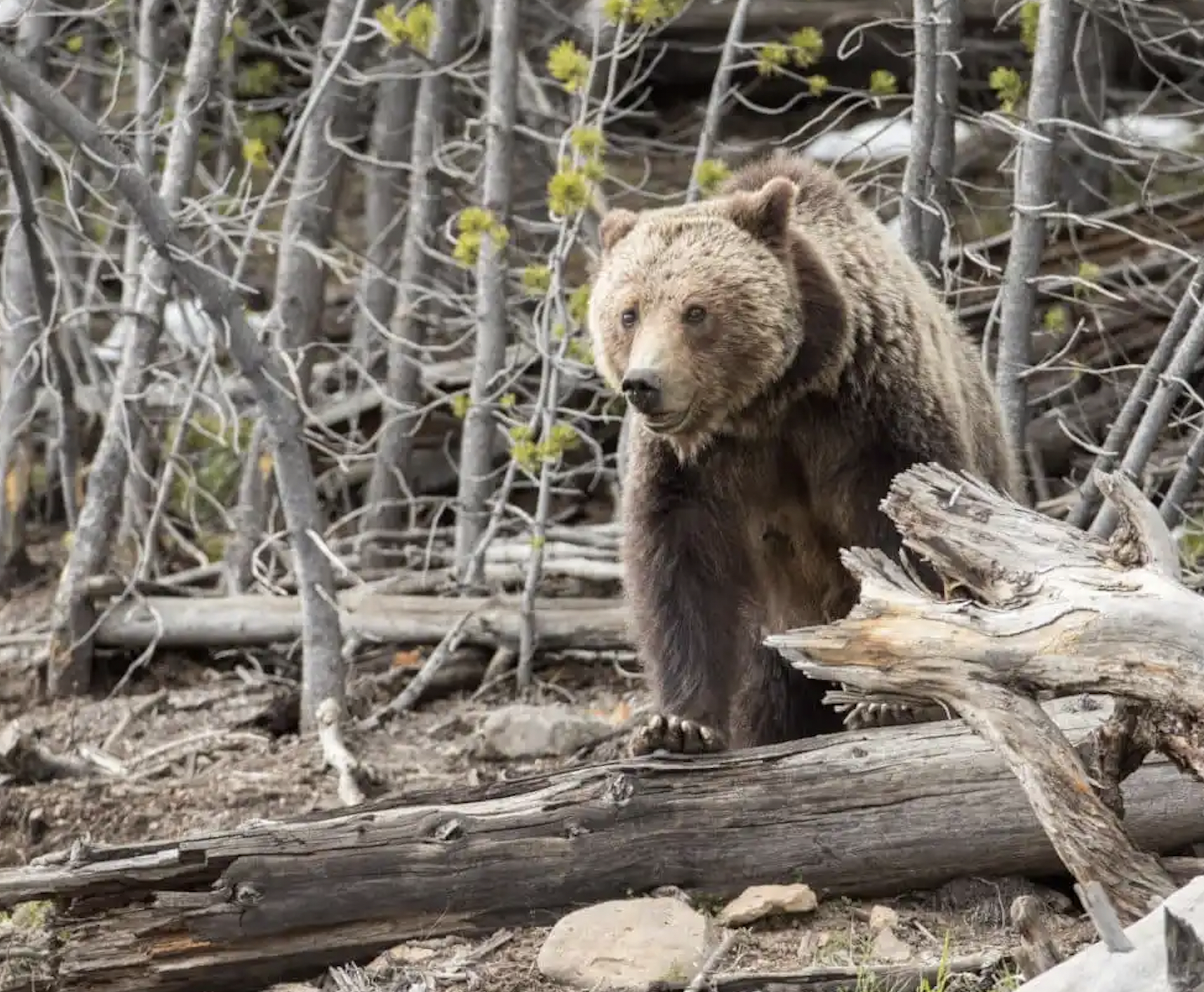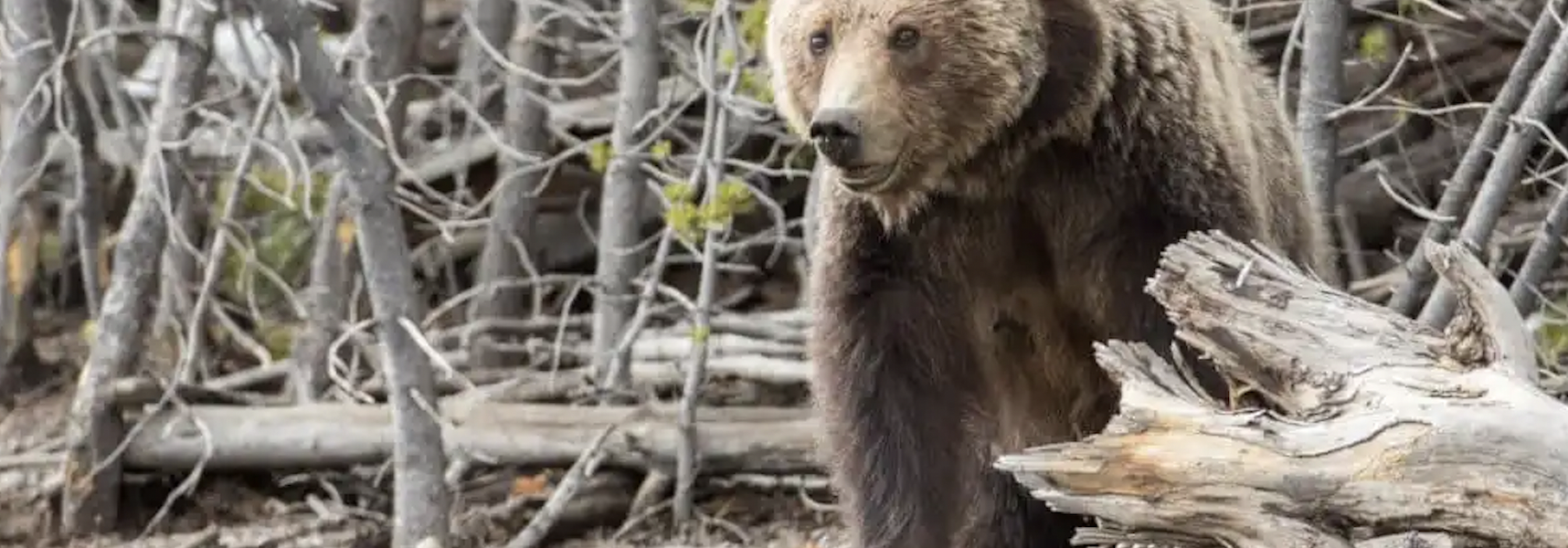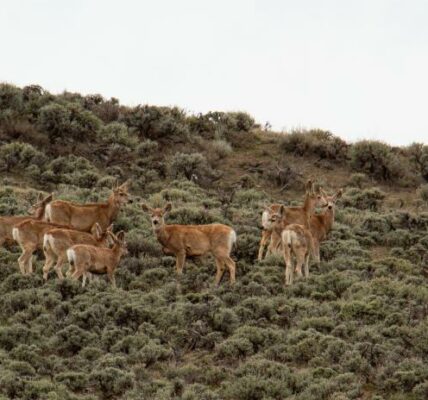
• After half-century of expansion, bears reach limit of “suitable habitat,” federal scientists report.
By Mike Koshmrl, WyoFile.com
CODY—For nearly five decades the grizzly population emanating from Yellowstone National Park has pulsed farther and farther outward, reclaiming old haunts where humans wiped out their forebears in the early 20th century.
No longer.
A federal biologist presenting Wednesday to a part of the Interagency Grizzly Bear Committee for the Yellowstone ecosystem reported that the expansion into new habitat has ceased — and that their range has even retreated in places.
“I think it’s suggesting that we are reaching the limits of even marginal habitat,” Interagency Grizzly Bear Study Team Leader Frank van Manen told fellow members of the subcommittee. “There’s more human influence [on the ecosystem periphery], and so we have a lot more human-bear conflict and higher [grizzly] mortality.”
Grizzly distribution is measured by GPS data from the dozens of bears collared in the Greater Yellowstone Ecosystem. The locations of grizzly deaths are part of the equation, too.
The data suggest that grizzly range was more or less stagnant over the last two years, van Manen said. It even retracted along the northern periphery of grizzly range in southern Montana, according to data he presented. Overall the reduction in range amounted to 142 square miles — about 0.5% of the species’ total distribution.
The news wasn’t entirely unexpected by researchers who’ve seen clues in recent years that grizzly bears were reaching the limits of where they can reproduce and persist. From 2018 to 2020 there was an initial slowing of the expansion, van Manen said.
Decades of steady expansion preceded the stall with grizzlies reclaiming hundreds or even thousands of square miles every year. As recently as 2017, van Manen reported an 11% expansion over the course of just two years.
Counting bears
Although managers measure grizzly distribution throughout their range, they only monitor and estimate numbers in a defined area called the demographic monitoring area. About 40% of grizzly range, however, falls outside the DMA, and grizzly numbers in these outskirt areas are unknown.
Even within the DMA, counting bears is an evolving process. Van Manen announced a change in how the Interagency Grizzly Bear Study Team estimates numbers within the DMA. The Cody meeting marked the first time the research team has transitioned to an “integrated population model,” which he described as a “much more advanced” than the past method, which relied heavily on aerially counting females with cubs.
At last count, the old method tallied 1,069 bears. Manager now estimate 965 DMA grizzlies under the new method. That’s the second time in three years that officials have altered how they count bears. The 2020 population estimate — two iterations ago — was 727 bears. Although grizzly numbers have swung by the hundreds on paper, it’s likely that numbers of flesh-and-blood bruins have more or less stayed the same.
The change to how bears are counted — known as recalibration — was one issue U.S. District Court Judge Dana Christensen cited when he rejected the U.S. Fish and Wildlife Service’s most recent attempt at delisting grizzlies from the Endangered Species Act. The worry was that revising the population estimate upward, without simultaneously adjusting population objectives upward, could result in more hunting and fewer bears.
Using the old estimate of 1,069 grizzlies, Wyoming could have hunted up to 39 bears if the states successfully regained jurisdiction over the species. It’s unclear what a hypothetical hunt would look like using the new estimate of 965 grizzlies.
Containment
The end of grizzly range expansion in the Greater Yellowstone Ecosystem fits with Wyoming’s goal of constraining the large, hard to live with, omnivores to the Yellowstone region’s core. Last time the state had authority over bears, wildlife managers pitched a peripheral hunt as a tool to drive down the population. Such a regime would have mimicked the state’s two-tiered wolf management approach, which keeps wolf numbers outside northwest Wyoming as low as possible.
In the absence of people, much or all of Wyoming would be viable grizzly habitat.
“In theory a lot of that sagebrush country could be suitable habitat, with much lower [grizzly bear] densities,” van Manen told WyoFile. “But there is a human influence on that landscape. There’s more agriculture, more roads, more towns, and that combined creates a different enough landscape context that it becomes much less suitable. Humans are part of what drives suitable habitat, it’s not just natural vegetation.”
The Cody meeting offered a glimpse of the friction between grizzlies and humans. Curt Bales, of the TE Ranch, spoke of “tremendous” population density of bears on the land he manages up the South Fork of the Shoshone River.
“Quite often we’ll have 11 to 13 bears, spring and fall both, coming in and out of our fields,” Bales said. “We’ll see [them] every morning. We’ve had conflicts already this year.”
WyoFile is an independent nonprofit news organization focused on Wyoming people, places and policy.





